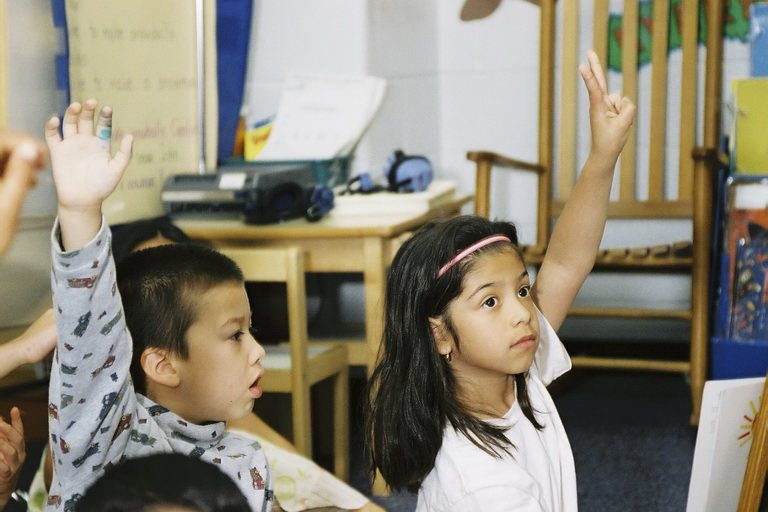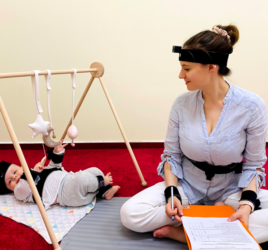
A fixed or a growth mindset? Why we should emphasize the context-dependent and malleable nature of students’ mindsets regarding intelligence
How do you think about intelligence? Do you think it is fixed? Or do you think that it can change? In other words, do you have a fixed mindset? Or a growth mindset?
Fixed vs. growth mindsets and learning
Interestingly, how students think about the nature of their own intelligence has a large influence on how well they do as students. Students with a fixed mindset believe that their intelligence cannot change. For these students, intelligence is innate; they think of themselves as having been born with only limited potential, and infer this from observations about how their performance is received. As a result, such students are said to focus on performance outcomes, which they interpret as indicators of how smart they are. Thus, low grades may be interpreted as evidence that one is ‘not smart enough’, leading to decreased motivation and increased feelings of helplessness. In contrast, students with a growth mindset believe that their intelligence is malleable across time and contexts, and, moreover, that it is a function of effort. As a result, these students are said to focus on the process of learning, rather than on the outcome: they view poor outcomes as an opportunity to learn, and this interpretation leads to, among other things, increased effort [1].
In short, mindset matters. Indeed, the consensus is that a growth mindset should be encouraged in students. Interventions that aim to achieve this, tend to be based on providing information about the plasticity of the brain, and therefore about intelligence [2]. Yet underlying all of this is the somewhat ironic, apparently paradoxical, and perhaps only implicit implication that mindsets themselves are relatively fixed: they are seen as latent traits that students “have” as a function of their personality—which is innate. Consequently, Person A “has a fixed mindset” and Person B “has a growth mindset”. Moreover, it is assumed that these mindsets generate behavior (e.g., effort, motivation, etc.). So, if person A responds with helplessness to a difficult task in class and feels demotivated, the assumption is that this is because person A has a fixed mindset.
Mindsets as dynamic, malleable and embedded networks
I would like to challenge this conceptualization , and suggest that an individual’s mindset is, firstly, not fixed, and secondly, not something that an individual “has”. Instead, I propose a new conceptualization in which a student’s mindset is, firstly, a dynamic and malleable network of related emotions, behavior, and cognitions that have become linked to each other. This means that these fixed- or growth-related behavior, emotions, or thoughts are elements that constitute a mindset rather than cause a mindset. And secondly, I suggest that this ‘mindset network’ is embedded within – and emerges out of – interactions that take place with others, such as parents or teachers. In other words, an individual’s mindset is extremely context-dependent. The Complex Dynamic Systems (CDS) approach provides a framework for understanding how this works.
A key principle in the CDS approach is the idea that emotions, behavior, or thoughts become coupled, such that if one occurs another will be triggered [3]. Coupling between elements of mindset can occur if a certain set of elements tends to co-occur together frequently enough across time. The same principle is applied in neuroscience (where it is called the Hebb rule), explaining how neural networks become increasingly stable across time due to the repeated activation of a particular cellular connection, whereby the resulting pattern of neural activity becomes increasingly predictable and stable [4]. In the context of mindset development, if a well-meaning teacher tends to console a specific student when he doesn’t do well during math class (e.g., “that’s okay, remember that you’re great at sports”), this may begin to elicit helplessness in the student during class – where he simply gives up and no longer attempts to learn under the assumption that he can’t learn. After a while, this behavioral response may become increasingly coupled with a feeling of insecurity. In this example, certain kinds of emotions (insecurity) and behavior (learned helplessness) become linked to certain kinds of learning experiences (e.g., failure during math class) and behavior from others (e.g. consolation from the teacher).
The process of coupling may start out somewhat randomly, but each time that the same set of behavior, emotions, and thoughts occur together, and in response to the same contextual trigger, the network becomes entrenched and the chances become higher that they will co-occur in the future. After a while, if a certain set of elements accumulates across time, stability is created as the coupling between elements becomes increasingly tighter, such that they keep each other in place. To illustrate: if the student from the above example happens to experience a positive emotion when having difficulty during math class (e.g., motivation to try harder), this experience will quickly become undermined by the now-dominant network of fixed-oriented elements and the student will quickly fall into the old habit of giving up.
The new conceptualization and its implications
This new conceptualization of mindset stability is very different from the traditional conceptualization of “having” a relatively stable latent mindset that generates these emotions or behavior. A core difference is that the new conceptualization emphasizes that the emergence of the emotional, behavioral, and cognitive elements of the ‘mindset network’ remain coupled with the context. Therefore, the mindset network will only emerge if elements of that network are elicited by the context. Context dependency is thus pivotal in the new conceptualization. Moreover, because mindsets are dynamic, the nature of the network is always changing if new elements are introduced and subsequently repeatedly experienced across time. A consistent change in the context can therefore bring about the emergence of a new mindset network across time. Thus the malleability of mindset itself is also pivotal in the new conceptualization.
This new perspective on mindsets has important implications for how we should attempt to stimulate a growth mindset in students. The classic top-down way, where individuals are more-or-less convinced that intelligence is malleable by giving them information about the plasticity of the brain, does not have lasting influences on actual in-class behavior [5]. I would suggest that we should approach change of student’s mindsets, firstly, as a bottom-up process. Learning contexts, i.e., teaching practices, need to repeatedly elicit growth-oriented behavior during the learning process (such as encouraging a new learning strategy when the previous one leads to failure) and these need to become increasingly linked with other growth-oriented responses across time (such as feeling okay with mistakes). By repeatedly eliciting growth-mindset oriented elements in the learning context, such that these become coupled across time, a more adaptive mindset network can emerge and real, meaningful change can occur.
Relevant links and publications
NOTE: Image by US Department of Education, licenced under CC BY 2.0



